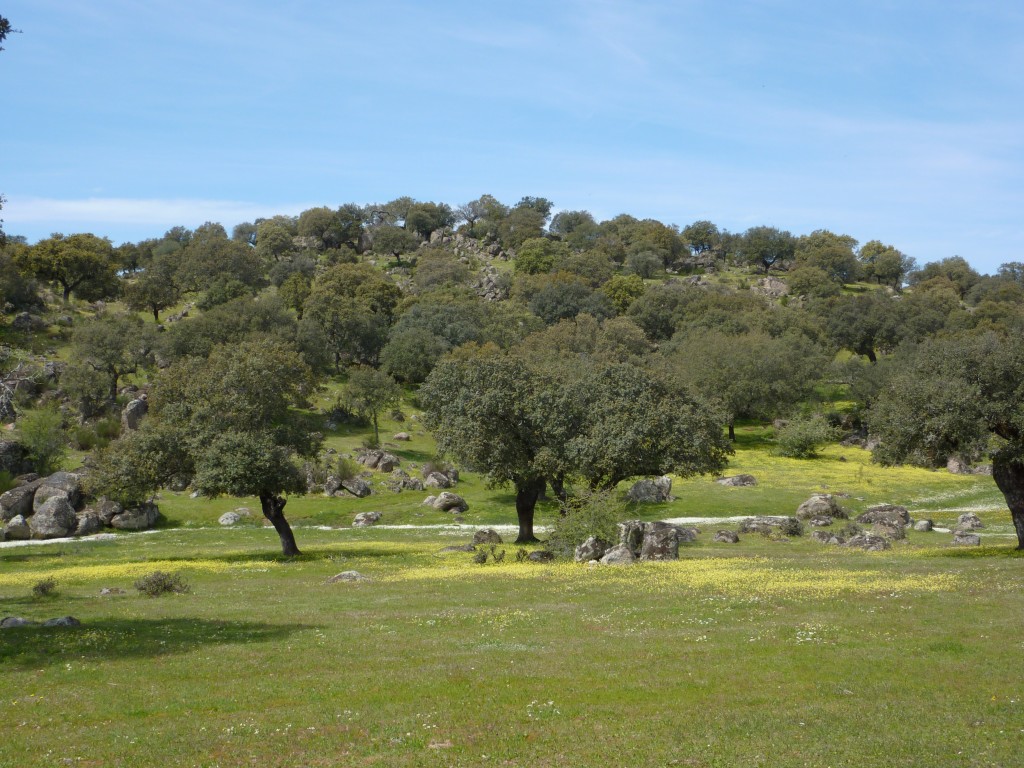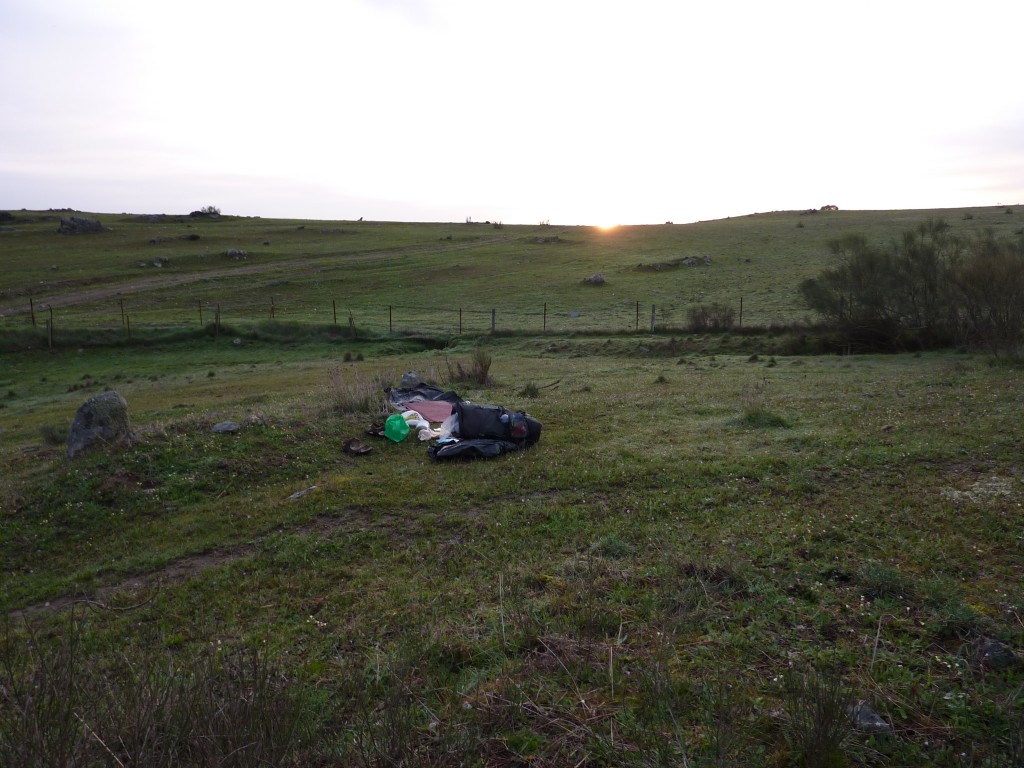Learning about the Camino
[mapsmarker layer=”1″]
When I left Monesterio with my blister popped by the patient nurse, I soon lost my way. Probably I was distracted by having to put my opened blister in the water when crossing a swollen river. I was concerned because the torrential rain of the previous night had overwhelmed the sewage works which poured out a smelly beige froth into the river I had to wade through.
I was learning to walk with blisters. At first I was afraid that putting me weight on my foot would just make it worse. What happenned is that, with time, my foot became numb and I could walk fairly normally. My relief at this discovery was shortly replaced with a new concern. I could not find any yellows arrows which mark the Camino.
I had still not noticed that other people on the Camino start and finish early. Later I learned that there were about 8 or 9 of us walking more or less the same stage each day. I, however, was behind them all and lost. So I looked at the sinking sun and headed North because that is where the Via de La Plata goes. These March days were still short and I realised that I would not reach the next town by nightfall. Then I eventually saw a yellow arrow and was comforted. I wondered about the road I had not travelled.
I climbed up a small hillside dotted encinas. These are the oak trees which produce the acorns for the black pigs. I recalled that I had always been puzzled that Don Quixote and Sancho Panza could live for days on acorns, albeit declaring that “hunger is the best sauce”. Encinas produce edible acorns, some sweet and some bitter but all, I am sure, nutricious. Much land in Extremadura is dehesa: grazing land populated by encinas.
As night fell I found a fairly level spot right alongside the path, took out my sleeping bag and lay under the stars. I woke from time to time and thought of how often I have read descrptions of what people feel when they look at the night sky: thoughts of infinity, of ancestors telling stories, myths and modern astronomy, of dark matter and time and distances bigger than the debt of the USA. I relaxed into a feeling of security. Again, nothing else seemed important: only this grace given to be part of this mystery. “Nada te turbe” An inner warmth filled me with peace.
At 5 am I noticed the cold. My sleeping bag had a label which said “min, temp -6º”. It was frosty but not freezing. Now I realise that the minimum temperature is very different from the “comfortable” temperature. At the minimum temperature you nearly die.
Joyfully, I gathered my modest survival kit into my rucksack and headed for an early stop in the albergue (now closed!!) in Fuente de Cantos. After two days without a shower I wondered if they had hot water.




